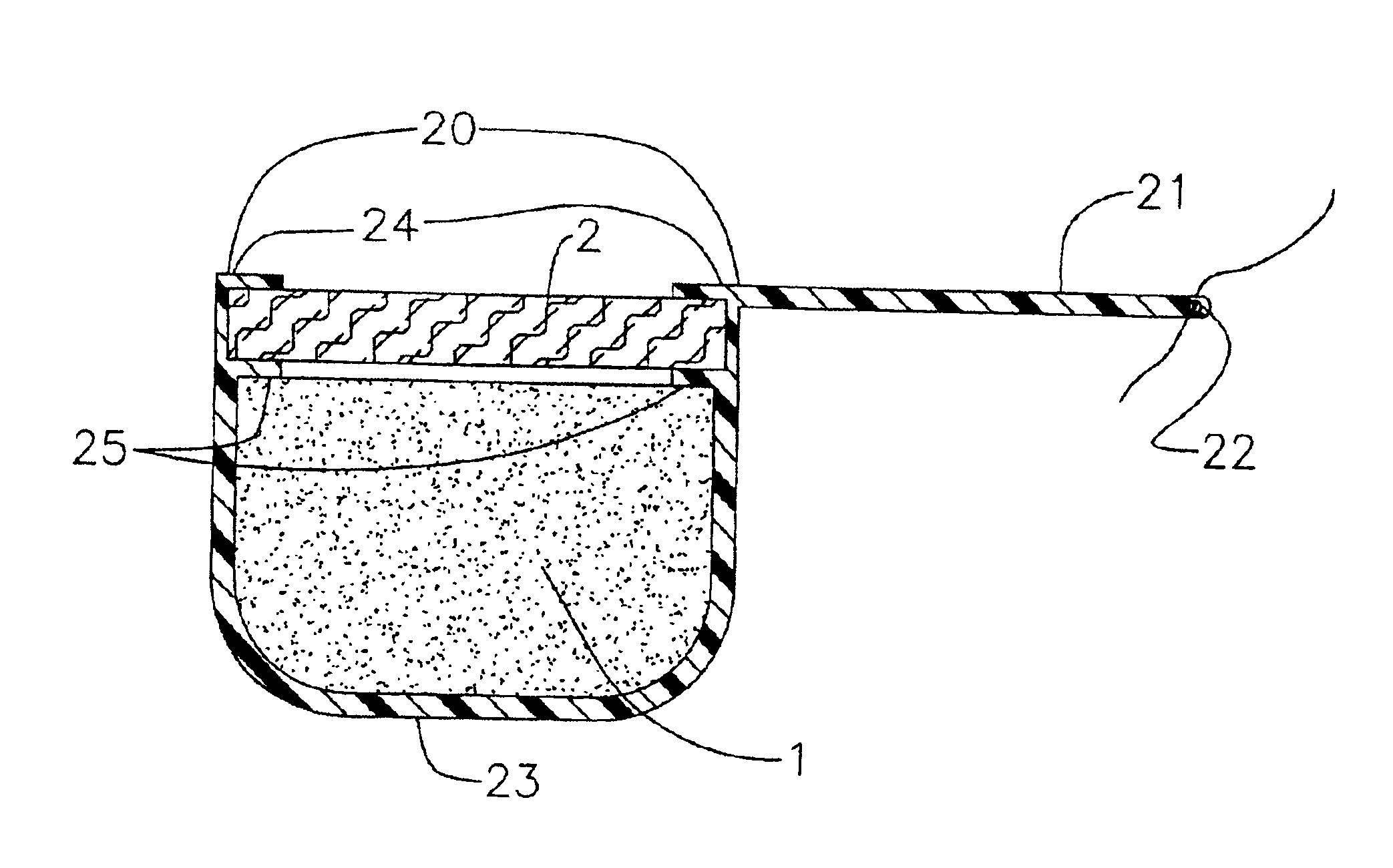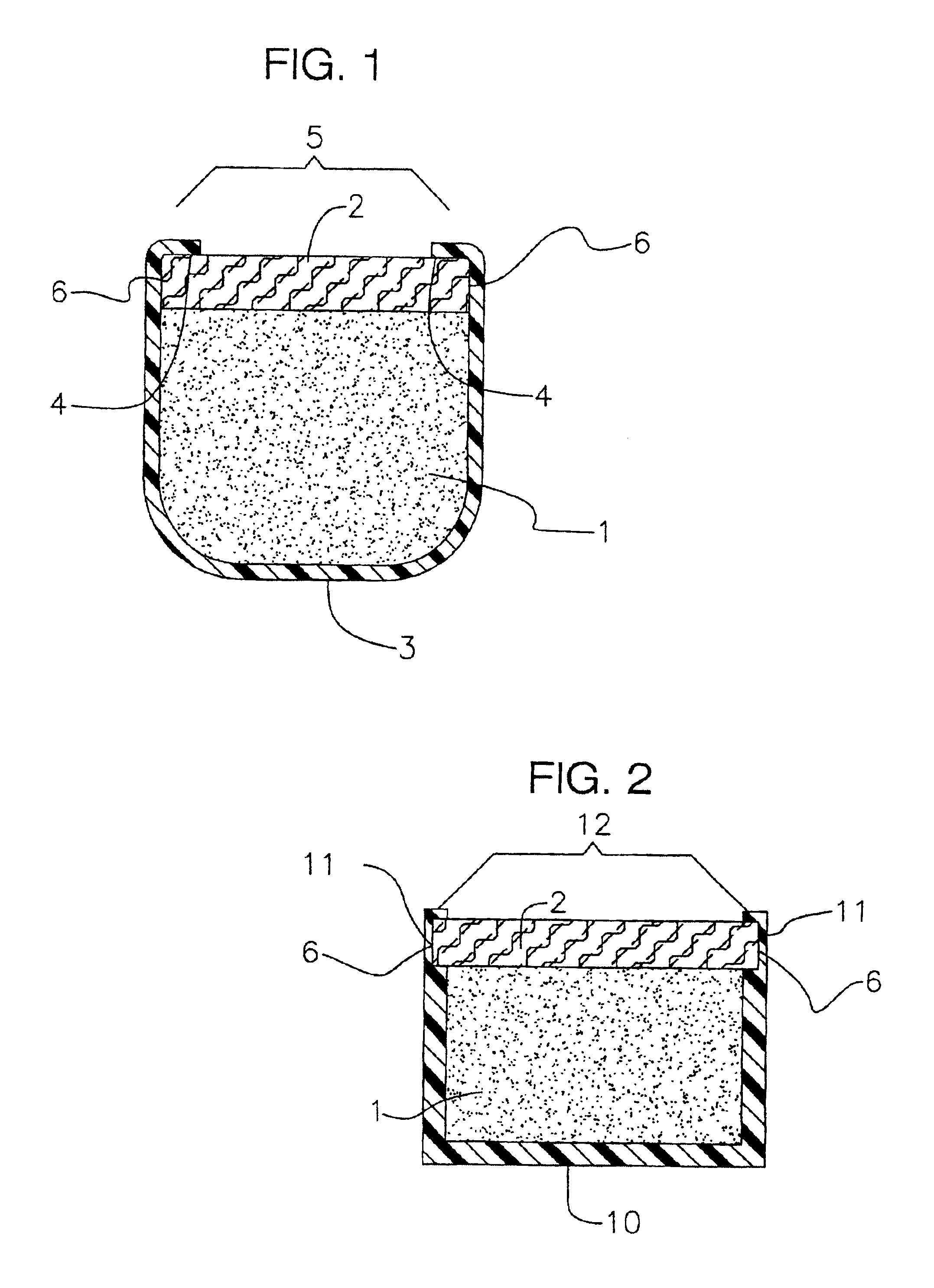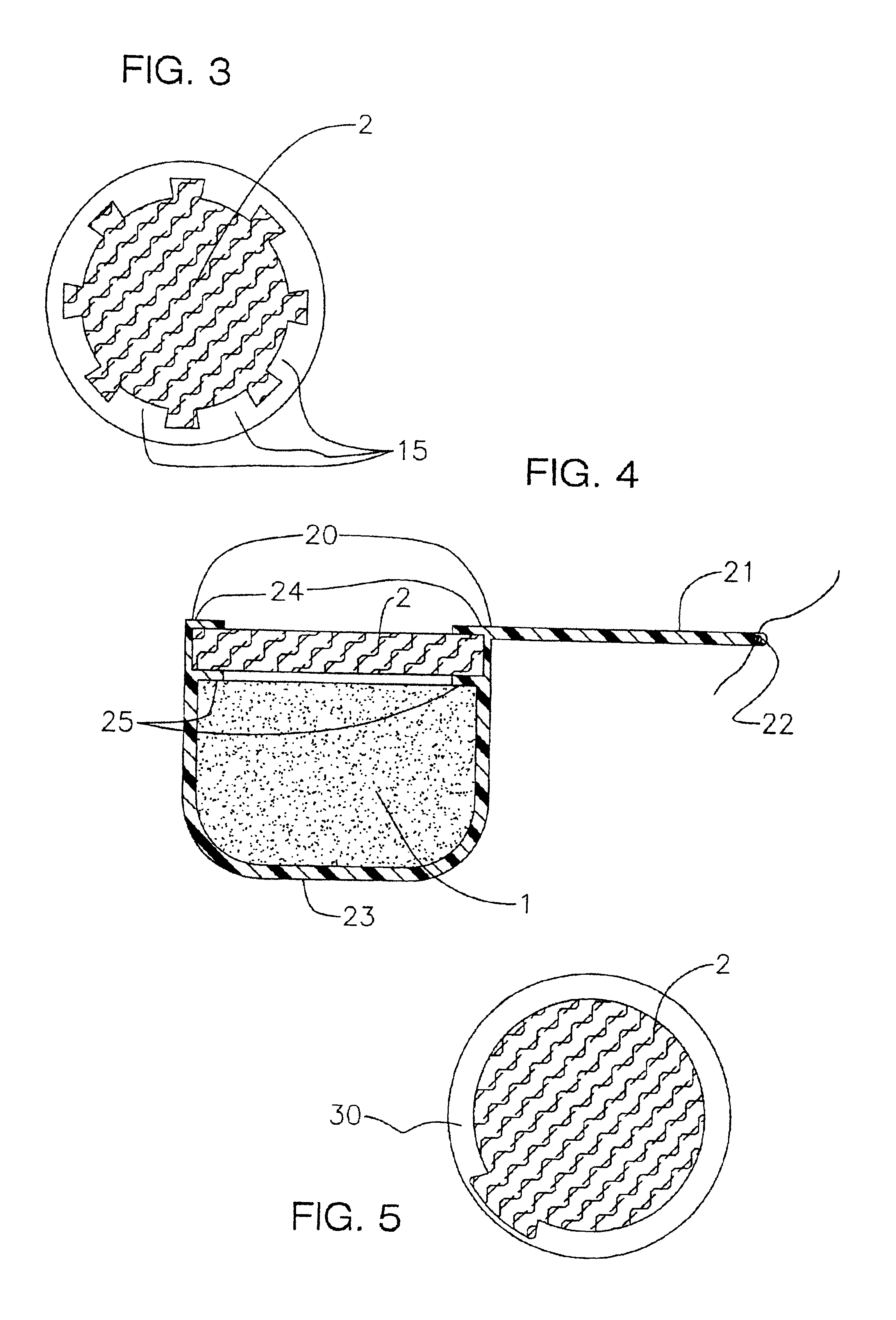Sustained release drug delivery devices with prefabricated permeable plugs
a technology of permeable plugs and suction devices, which is applied in the direction of prosthesis, inorganic non-active ingredients, bandages, etc., can solve the problems of limiting the usefulness of drugs, reducing the number of patients who experience a relapse during treatment, and inability to administer drugs orally or intravenously without the risk of various adverse side effects
- Summary
- Abstract
- Description
- Claims
- Application Information
AI Technical Summary
Benefits of technology
Problems solved by technology
Method used
Image
Examples
example 1
[0096]A device according to the present invention is prepared. The unitary cup is made of silicone and has eight inwardly extending lips around the top open end of the cup. The unitary cup has an integral suture tab with a hole at the end of the tab opposite the cup. The drug core is formed as a pellet composed of a 2.5 mg core of fluocinolone acetonide and inserted into the cup. A plug of PVA is formed to the same radial extend as the cup. A few drops of PVA are placed on top of the drug core, then the PVA plug is snapped into the recess between the top of the drug core and the lips. The lips thereby interacting with the plug and holding it in place.
example 2
[0097]The device of example 1 above is placed in a vial with 2.0 mL of a release media of 0.1 Sodium Acetate, pH 4.2. The vial is maintained in a 37° C. bath for 24 hours. After 24 hours, the vial is inverted to ensure homogeneity and the device is removed to a new vial with fresh media. This process is repeated for each day. The media is tested to determine the amount of the drug and verifies that it is being released from the device. From the data that is collected, the release rate of the device can be determined.
PUM
| Property | Measurement | Unit |
|---|---|---|
| Solubility (mass) | aaaaa | aaaaa |
| Permeability | aaaaa | aaaaa |
Abstract
Description
Claims
Application Information
 Login to View More
Login to View More - R&D
- Intellectual Property
- Life Sciences
- Materials
- Tech Scout
- Unparalleled Data Quality
- Higher Quality Content
- 60% Fewer Hallucinations
Browse by: Latest US Patents, China's latest patents, Technical Efficacy Thesaurus, Application Domain, Technology Topic, Popular Technical Reports.
© 2025 PatSnap. All rights reserved.Legal|Privacy policy|Modern Slavery Act Transparency Statement|Sitemap|About US| Contact US: help@patsnap.com



